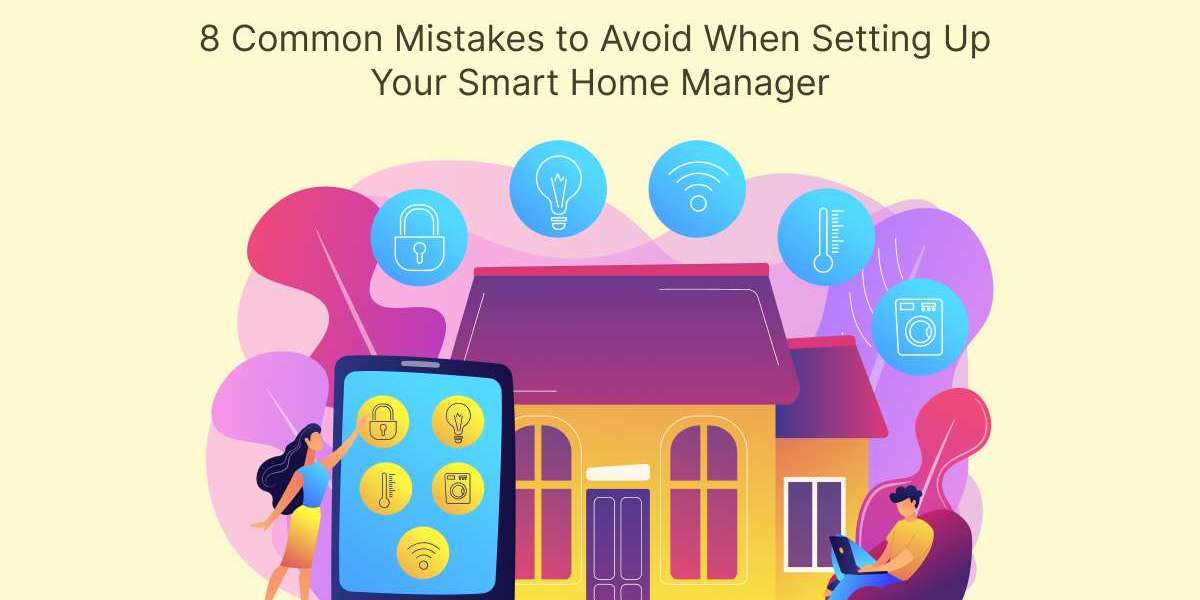Smart home technology has rapidly transformed the way we interact with our homes, allowing us to control everything from lighting and security to heating and entertainment systems with just a few clicks or voice commands. However, setting up a smart home manager can be a daunting task, especially if you're new to the technology. While the benefits are immense, it's easy to make mistakes during the setup process that can lead to frustration, inefficiency, and even security vulnerabilities.
To help you get started on the right foot, we've compiled a list of 8 common mistakes to avoid when setting up your smart home manager. By understanding these pitfalls and taking steps to avoid them, you can ensure that your smart home runs smoothly and efficiently.
Not Checking Device Compatibility
Why Compatibility Matters
One of the most frequent mistakes people make when setting up their smart home manager is failing to check the compatibility of their devices. Not all smart home devices are universally compatible with every smart home manager. For example, some devices work with Amazon Alexa but not with Apple HomeKit or Google Assistant. Before purchasing any smart home product, ensure that it is compatible with your chosen smart home manager.
How to Avoid This Mistake
Before you start adding smart devices to your home, research your smart home manager's supported devices. Most managers, like Alexa, Google Assistant, and Apple HomeKit, have a list of compatible products on their websites. Check these lists to ensure every device you purchase will integrate seamlessly with your system.
Overcomplicating the Setup
The Problem with Too Many Devices at Once
When you first dive into smart home technology, it's easy to get excited and try to set everything up at once. However, this can lead to a confusing and overwhelming system that's difficult to manage. Overloading your smart home with too many devices right away can make it harder to troubleshoot issues or understand how each piece works.
How to Avoid This Mistake
Start small and gradually expand your smart home ecosystem. Begin with a few core devices, like smart lighting, a thermostat, or a smart security camera, and once you're comfortable managing them, you can add more devices. This incremental approach will help you build a more intuitive system while minimizing confusion and potential errors.
Ignoring Security Concerns
Risks of Unsecured Smart Devices
Smart home devices, if not properly secured, can pose serious privacy and security risks. Since these devices are connected to your home network, they can be vulnerable to hacking or data breaches if they aren't properly protected. Unfortunately, many users neglect basic security measures when setting up their smart home manager.
How to Avoid This Mistake
Ensure that you take appropriate security precautions when setting up your smart home. This includes:
- Use strong, unique passwords for your devices and smart home manager.
- Enabling two-factor authentication (2FA) where possible.
- Keeping your smart home devices' firmware and software up-to-date.
- Regularly review and adjust the privacy settings of your devices.
Not Creating a Centralized Ecosystem
The Problem with Fragmented Systems
Many homeowners make the mistake of using multiple smart home ecosystems that don't communicate with each other. For example, you may have some devices that work with Google Assistant, others with Alexa, and even more with Apple HomeKit. This fragmented system can make controlling your smart home more complex and less efficient.
How to Avoid This Mistake
It's best to choose one main smart home manager (Alexa, Google Assistant, Apple HomeKit, or Samsung SmartThings) and stick with it for all your devices. This ensures that your entire system is centralized and can be controlled easily through a single app or interface. If you must use multiple ecosystems, look for devices that support integration across different platforms to reduce complexity.
Overlooking Device Placement
Why Placement Matters
Another common mistake is placing your smart devices in locations that hinder their effectiveness. For example, placing a smart thermostat in an area with inconsistent temperatures or hiding a smart speaker in a spot where it can't pick up voice commands clearly can reduce the efficiency of your devices.
How to Avoid This Mistake
Take time to think about where each smart device will be most effective. For example:
- Place smart thermostats in central areas, away from direct sunlight or drafts.
- Position smart speakers in locations where voice commands can be easily heard.
- Install smart cameras in places that give you the best view of entry points but where they won't be obstructed.
Forgetting to Set Up Routines and Automation
The Power of Automation
One of the biggest benefits of a smart home manager is the ability to create routines and automate tasks. However, many users set up their devices without taking full advantage of this functionality. As a result, they end up using their smart home in a very manual, inefficient way.
How to Avoid This Mistake
Spend time exploring the automation features in your smart home manager's app. Create routines that automate daily tasks, such as:
- Setting lights to turn on at sunset.
- Have your smart thermostat adjust the temperature based on your schedule.
- Creating a "goodnight" routine that locks doors, turns off lights, and lowers the thermostat when you go to bed.
By leveraging automation, you can make your smart home truly "smart" and reduce the need for constant manual intervention.
Not Having a Backup Plan for Internet Outages
The Internet Dependency Issue
Most smart home devices rely on a stable internet connection to function properly. If your Wi-Fi goes down, your smart home could lose functionality, leaving you unable to control key devices like your lights, security cameras, or thermostats.
How to Avoid This Mistake
While you can't always prevent internet outages, you can mitigate their impact by choosing smart devices that have offline functionality. Some smart home managers allow for local control, meaning you can still operate your smart devices without internet access. Additionally, consider investing in a backup battery or power source for critical devices like your security cameras or smart locks.
Neglecting Regular Maintenance and Updates
The Importance of Staying Updated
Smart home devices, like all technology, require regular software and firmware updates to stay secure and perform optimally. Neglecting these updates can leave your system vulnerable to bugs and security risks.
How to Avoid This Mistake
Make it a habit to check for updates for your smart home manager and connected devices regularly. Many apps will notify you when updates are available, so don't ignore these prompts. Keeping your devices up-to-date ensures that you're always benefiting from the latest features, security patches, and performance improvements.
Conclusion
Setting up a smart home manager can greatly enhance your home's efficiency, security, and convenience, but avoiding common mistakes during the process is crucial to getting the most out of your investment. From ensuring device compatibility and focusing on security to leveraging automation and maintaining your system, there are several key areas to pay attention to as you build your smart home ecosystem. Learn how to set up your smart home manager with ease! Discover the top 8 common mistakes to avoid and ensure a seamless experience. Expert tips from the leading on-demand app development company .
By avoiding these 8 common mistakes, you can set yourself up for success and enjoy a seamless, efficient, and secure smart home experience. Take your time to plan out your setup, stay informed about updates and security best practices, and don't be afraid to start small and grow your system over time. With the right approach, your smart home will enhance your daily life in ways you may never have imagined.








